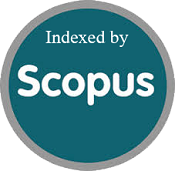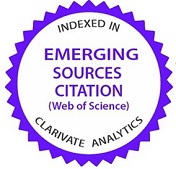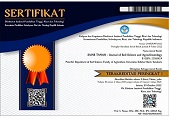Sustainable wheat subspecies mixtures production by evaluating morphological traits and stability analysis of different varieties in different environments in Jordan
Abstract
Climate change and water scarcity present significant challenges to food security in arid and semi-arid regions, such as Jordan. Grains—particularly wheat—are essential for nutrition and national food security. This study addresses sustainable wheat production strategies under semi-arid conditions, focusing on the utilization of morphological characteristics through targeted breeding programs. Assessing genetic diversity is a critical prerequisite for evaluating population adaptation to novel environmental conditions. This study aimed to evaluate the morphological traits and yield stability of seven certified wheat (Triticum aestivum L.) varieties—ACSAD65, Ammoun, Cham1, Dair Alla6, Hourani, Mixture, and Um Qais—across three contrasting environments at Maru, Mushager, and Rabbah. These sites represent diverse agro-ecological zones within the semi-arid landscape of Jordan. The experiment was conducted using a randomized complete block design (RCBD) in a 3×7 factorial split-plot arrangement, where the three locations served as main plots and the wheat varieties as subplots. Results indicated that both location and growing season significantly affected yield and its components. The variety Um Qais exhibited the highest grain yield, while the mixture showed poor performance. Among the locations, Maru demonstrated superior performance in terms of biological yield, grain yield, straw yield, and harvest index, followed by Mushager and Rabbah. According to GGE biplot analysis, Um Qais emerged as the ideal genotype for grain yield, achieving the highest mean performance across all locations. These findings offer valuable insights for policymakers, agricultural researchers, and farmers by identifying high-yielding and stable wheat varieties that are adapted to local semi-arid environments.
Keywords
Full Text:
PDFReferences
Al-Sayaydeh, R., Shtaya, M. J., Qubbaj, T., Al-Rifaee, M. K., Alabdallah, M. A., Migdadi, O., . . . Al-Abdallat, A. M. (2023). Performance and Stability Analysis of Selected Durum Wheat Genotypes Differing in Their Kernel Characteristics. Plants, 12(14), 2664. https://doi.org/10.3390/plants12142664
Al-Tawaha, A. R. M. S., Dar, J. A., Sultan, A., Benkeblia, N., Amanullah, Imran, . . . Alatrash, H. (2022). Climate Change and Cereal Production. In Climate Change and Agriculture (pp. 263-284). https://doi.org/10.1002/9781119789789.ch12
Al Tawaha, A. R. M., Alrawashdeh, I., Abu-Darwish, D., Al-Tawaha, A. R., Aleksanyan, A., Karnwal, A., . . . Jubily, A. (2025). Chapter 29 - Drought resilience in agriculture: mechanisms and adaptation strategies in a changing climate. In H. Etesami & Y. Chen (Eds.), Sustainable Agriculture under Drought Stress (pp. 489-498). Academic Press. https://doi.org/10.1016/B978-0-443-23956-4.00029-6
Ali, N., Rahman, I. U., Badakshi, F., Tariq, M. J., & Mujeeb-Kazi, A. (2020). Chapter 2 - Ensuring sustainable food security: exploiting alien genetic diversity in wheat breeding for adaptation to emerging stresses. In M. Ozturk & A. Gul (Eds.), Climate Change and Food Security with Emphasis on Wheat (pp. 31-42). Academic Press. https://doi.org/10.1016/B978-0-12-819527-7.00002-9
Ali, S., Gucheng, L., Ying, L., Ishaq, M., & Shah, T. (2019). The Relationship between Carbon Dioxide Emissions, Economic Growth and Agricultural Production in Pakistan: An Autoregressive Distributed Lag Analysis. Energies, 12(24), 4644. https://doi.org/10.3390/en12244644
Araus, J. L., & Cairns, J. E. (2014). Field high-throughput phenotyping: the new crop breeding frontier. Trends in Plant Science, 19(1), 52-61. https://doi.org/10.1016/j.tplants.2013.09.008
Asseng, S., Ewert, F., Martre, P., Rötter, R. P., Lobell, D. B., Cammarano, D., . . . Zhu, Y. (2015). Rising temperatures reduce global wheat production. Nature Climate Change, 5(2), 143-147. https://doi.org/10.1038/nclimate2470
Beres, B. L., Rahmani, E., Clarke, J. M., Grassini, P., Pozniak, C. J., Geddes, C. M., . . . Ransom, J. K. (2020). A Systematic Review of Durum Wheat: Enhancing Production Systems by Exploring Genotype, Environment, and Management (G × E × M) Synergies [Review]. Frontiers in Plant Science, Volume 11 - 2020. https://doi.org/10.3389/fpls.2020.568657
Chandio, A. A., Akram, W., Ahmad, F., & Ahmad, M. (2020). Dynamic relationship among agriculture-energy-forestry and carbon dioxide (CO2) emissions: empirical evidence from China. Environmental Science and Pollution Research, 27(27), 34078-34089. https://doi.org/10.1007/s11356-020-09560-z
Chandio, A. A., Jiang, Y., Rehman, A., & Rauf, A. (2020). Short and long-run impacts of climate change on agriculture: an empirical evidence from China. International Journal of Climate Change Strategies and Management, 12(2), 201-221. https://doi.org/10.1108/IJCCSM-05-2019-0026
Choukri, M., Naimi, M., & Chikhaoui, M. (2023). Drought characterization: A systematic literature review. Sains Tanah Journal of Soil Science and Agroclimatology, 20(2), 15. https://doi.org/10.20961/stjssa.v20i2.77206
Dixit, P. N., Telleria, R., Al Khatib, A. N., & Allouzi, S. F. (2018). Decadal analysis of impact of future climate on wheat production in dry Mediterranean environment: A case of Jordan. Science of The Total Environment, 610-611, 219-233. https://doi.org/10.1016/j.scitotenv.2017.07.270
Güngör, H., Türkoğlu, A., Çakır, M. F., Dumlupınar, Z., Piekutowska, M., Wojciechowski, T., & Niedbała, G. (2024). GT Biplot and Cluster Analysis of Barley (Hordeum vulgare L.) Germplasm from Various Geographical Regions Based on Agro-Morphological Traits. Agronomy, 14(10), 2188. https://doi.org/10.3390/agronomy14102188
Hatfield, J. L., & Prueger, J. H. (2015). Temperature extremes: Effect on plant growth and development. Weather and Climate Extremes, 10, 4-10. https://doi.org/10.1016/j.wace.2015.08.001
Johansson, E., Branlard, G., Cuniberti, M., Flagella, Z., Hüsken, A., Nurit, E., . . . Vazquez, D. (2020). Genotypic and Environmental Effects on Wheat Technological and Nutritional Quality. In G. Igrejas, T. M. Ikeda, & C. Guzmán (Eds.), Wheat Quality For Improving Processing And Human Health (pp. 171-204). Springer International Publishing. https://doi.org/10.1007/978-3-030-34163-3_8
Johnson, H. W., Robinson, H. F., & Comstock, R. E. (1955). Estimates of Genetic and Environmental Variability in Soybeans. Agronomy Journal, 47(7), 314-318. https://doi.org/10.2134/agronj1955.00021962004700070009x
Kanaoujiya, R., Roy, O. S., Jaiswal, A., Singh, S. K., Al Tawaha, A. R. M., Srivastava, S., . . . Thangadurai, D. (2025). Chapter 2 - Agricultural water scarcity: an emerging threat to global water security. In H. Etesami & Y. Chen (Eds.), Sustainable Agriculture under Drought Stress (pp. 15-22). Academic Press. https://doi.org/10.1016/B978-0-443-23956-4.00002-8
Khadka, K., Earl, H. J., Raizada, M. N., & Navabi, A. (2020). A Physio-Morphological Trait-Based Approach for Breeding Drought Tolerant Wheat [Review]. Frontiers in Plant Science, Volume 11 - 2020. https://doi.org/10.3389/fpls.2020.00715
Li, Y., & Tao, F. (2022). Interactions of genotype, environment and management on wheat traits and grain yield variations in different climate zones across China. Agricultural Systems, 203, 103521. https://doi.org/10.1016/j.agsy.2022.103521
Ljubičić, N., Popović, V., Ćirić, V., Kostić, M., Ivošević, B., Popović, D., . . . Janković, S. (2021). Multivariate Interaction Analysis of Winter Wheat Grown in Environment of Limited Soil Conditions. Plants, 10(3), 604. https://doi.org/10.3390/plants10030604
Mesterházy, Á., Oláh, J., & Popp, J. (2020). Losses in the Grain Supply Chain: Causes and Solutions. Sustainability, 12(6), 2342. https://doi.org/10.3390/su12062342
Michael, P. S. (2020). Agriculture versus climate change – A narrow staple-based rural livelihood of Papua New Guinea is a threat to survival under climate change. Sains Tanah Journal of Soil Science and Agroclimatology, 17(1), 16. https://doi.org/10.20961/stjssa.v17i1.41545
MIT. (2023). TRADE and SUPPLY. Jordan Ministry of Industry. https://www.mit.gov.jo/Default/En
Momany, Y. (2001). Focus on Seed Programs The Seed Industry in Jordan. National Center for Agricultural Research and Technology Transfer (NCART). https://mel.cgiar.org/reporting/downloadmelspace/hash/ee4f59a4f096b4ecd2297363bfe218e4/v/04f61fe58620acf39d9cd984c2f943f8
Osman, R., Tahir, M. N., Ata-Ul-Karim, S. T., Ishaque, W., & Xu, M. (2021). Exploring the Impacts of Genotype-Management-Environment Interactions on Wheat Productivity, Water Use Efficiency, and Nitrogen Use Efficiency under Rainfed Conditions. Plants, 10(11), 2310. https://doi.org/10.3390/plants10112310
Porter, J., Xie, L., Challinor, A. J., Howden, M., Iqbal, M. M., Lobell, D. B., & Travasso, M. I. (2014). Food security and food production systems. In Climate change 2014: Impacts, Adaptation, and Vulnerability Part A: Global and Sectoral Aspects (pp. 485-533pp). Cambridge University Press. https://cgspace.cgiar.org/items/f8bb5ca4-a45b-4406-8642-9c777c4f9e66
Reynolds, M., Foulkes, M. J., Slafer, G. A., Berry, P., Parry, M. A. J., Snape, J. W., & Angus, W. J. (2009). Raising yield potential in wheat. Journal of Experimental Botany, 60(7), 1899-1918. https://doi.org/10.1093/jxb/erp016
Saeidnia, F., Taherian, M., & Nazeri, S. M. (2023). Graphical analysis of multi-environmental trials for wheat grain yield based on GGE-biplot analysis under diverse sowing dates. BMC Plant Biology, 23(1), 198. https://doi.org/10.1186/s12870-023-04197-9
Sayyah, S. S., Ghobadi, M., Mansoorifar, S., & Zebarjadi, A. R. (2012). Evaluation of drought tolerant in some wheat genotypes to post-anthesis drought stress. Journal of Agricultural Science, 4(11), 248. https://doi.org/10.5539/jas.v4n11p248
Shawaqfeh, S., Al Tawaha, A. R. M., Gunal, H., Al-Tawaha, A. R., Qotb, M. A., Karnwal, A., . . . Rashid, R. (2025). Chapter 1 - Climate change and drought: challenges for agriculture in arid environments. In H. Etesami & Y. Chen (Eds.), Sustainable Agriculture under Drought Stress (pp. 3-13). Academic Press. https://doi.org/10.1016/B978-0-443-23956-4.00001-6
Singh, A., Singh, D., Kang, J., & Aggarwal, N. (2011). Management practices to mitigate the impact of high temperature on wheat: a review. IIOAB J, 2(7), 11-22. http://www.iioab.org/article/IIOABJ_2.7_11-22.pdf
Sulaeman, Y., Sukarman, S., Neswati, R., Nurdin, N., & Basuki, T. (2023). Characteristics and utilization of black soils in Indonesia [Black soils; Land use; Mollisols; Soil organic carbon; Soil characteristics]. 2023, 20(1), 10. https://doi.org/10.20961/stjssa.v20i1.70343
Tékeu, H., Ngonkeu, E. M., Djocgoué, F. P., Ellis, A., Lendzemo, V., Springfield, L., . . . Botes, W. C. (2017). Genetic diversity of Cameroonian bread wheat (Triticum aestivum L.) cultivars revealed by microsatellite markers. African journal of biotechnology, 16(36), 1832-1839. https://doi.org/10.5897/AJB2017.16090
Yan, W., & Holland, J. B. (2010). A heritability-adjusted GGE biplot for test environment evaluation. Euphytica, 171(3), 355-369. https://doi.org/10.1007/s10681-009-0030-5
Zampieri, M., Weissteiner, C. J., Grizzetti, B., Toreti, A., van den Berg, M., & Dentener, F. (2020). Estimating resilience of crop production systems: From theory to practice. Science of The Total Environment, 735, 139378. https://doi.org/10.1016/j.scitotenv.2020.139378
Refbacks
- There are currently no refbacks.











.png)





